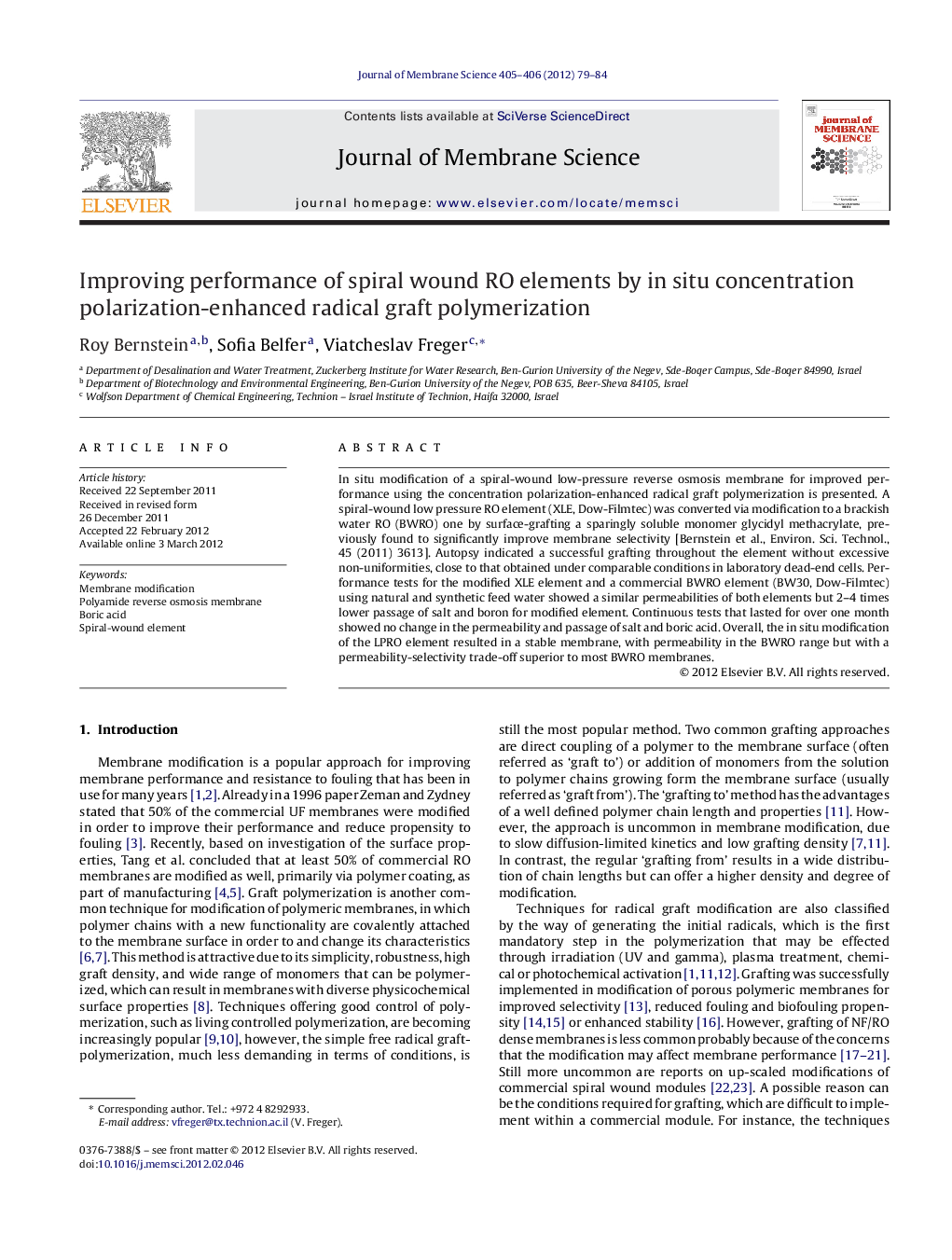| Article ID | Journal | Published Year | Pages | File Type |
|---|---|---|---|---|
| 635060 | Journal of Membrane Science | 2012 | 6 Pages |
In situ modification of a spiral-wound low-pressure reverse osmosis membrane for improved performance using the concentration polarization-enhanced radical graft polymerization is presented. A spiral-wound low pressure RO element (XLE, Dow-Filmtec) was converted via modification to a brackish water RO (BWRO) one by surface-grafting a sparingly soluble monomer glycidyl methacrylate, previously found to significantly improve membrane selectivity [Bernstein et al., Environ. Sci. Technol., 45 (2011) 3613]. Autopsy indicated a successful grafting throughout the element without excessive non-uniformities, close to that obtained under comparable conditions in laboratory dead-end cells. Performance tests for the modified XLE element and a commercial BWRO element (BW30, Dow-Filmtec) using natural and synthetic feed water showed a similar permeabilities of both elements but 2–4 times lower passage of salt and boron for modified element. Continuous tests that lasted for over one month showed no change in the permeability and passage of salt and boric acid. Overall, the in situ modification of the LPRO element resulted in a stable membrane, with permeability in the BWRO range but with a permeability-selectivity trade-off superior to most BWRO membranes.
► Facile and beneficial in situ modification of commercial BW RO elements demonstrated. ► Modified RO elements showed salt and boron rejection superior to most commercial elements. ► Performance of modified elements for natural and synthetic BW feeds sustained for several weeks.
